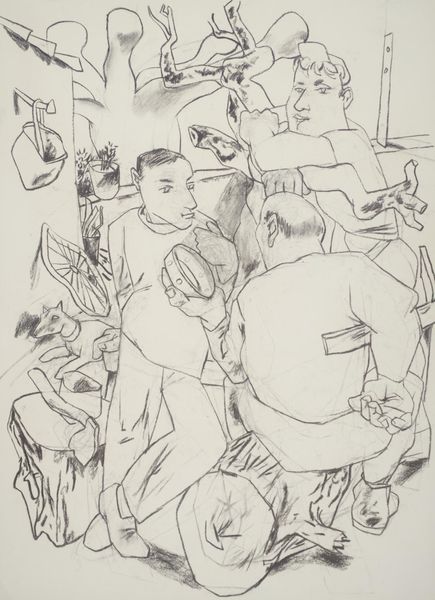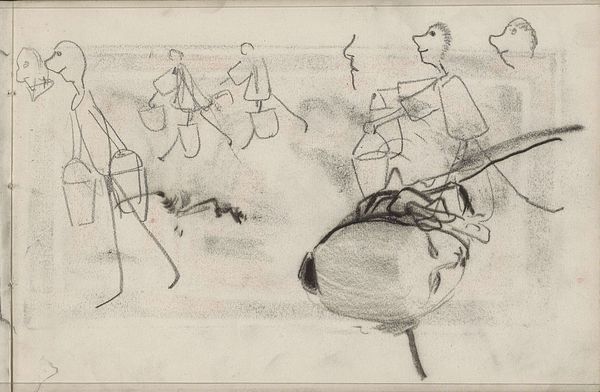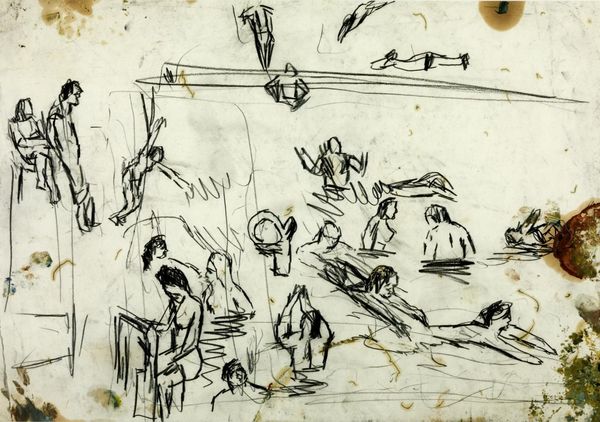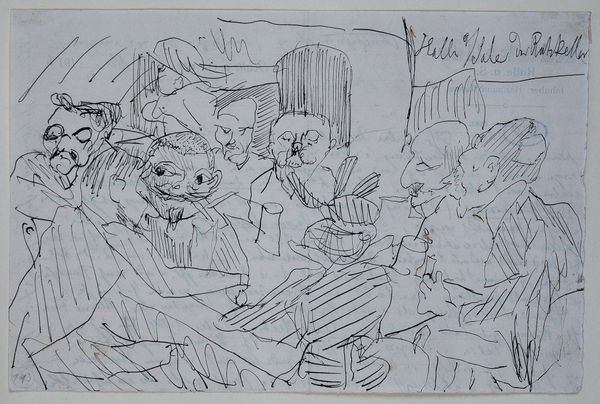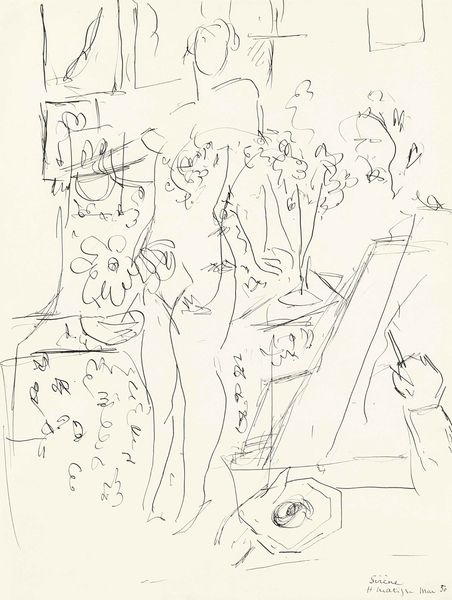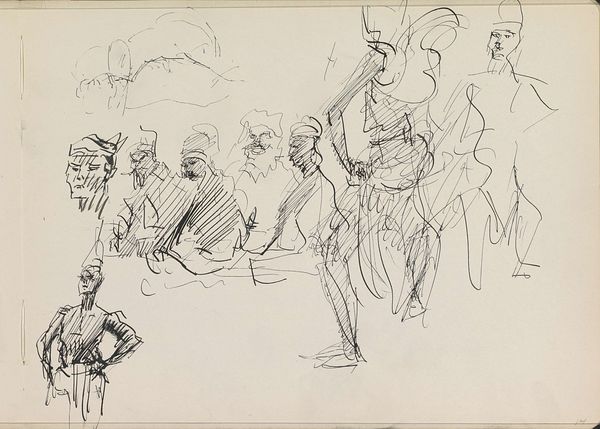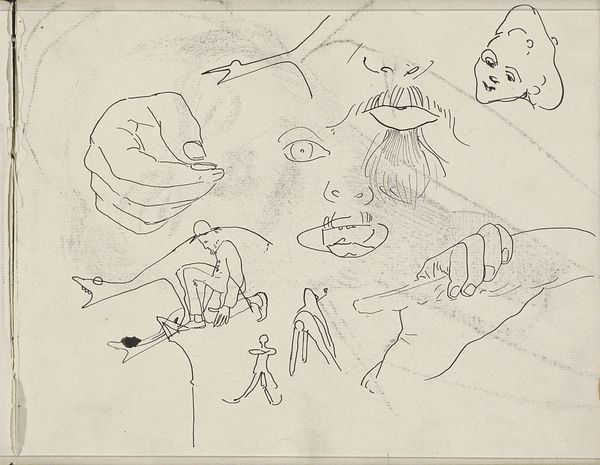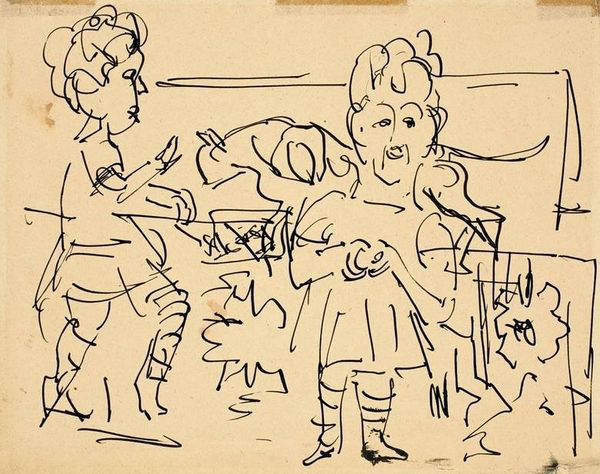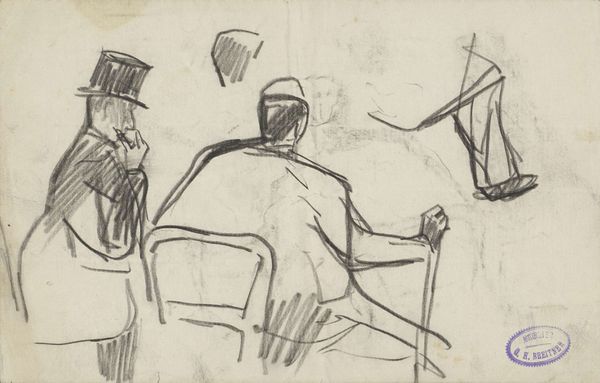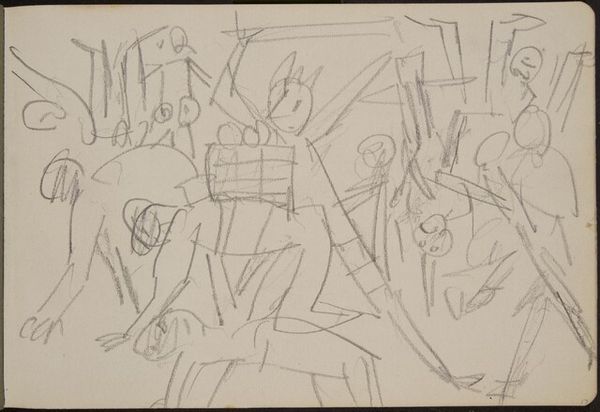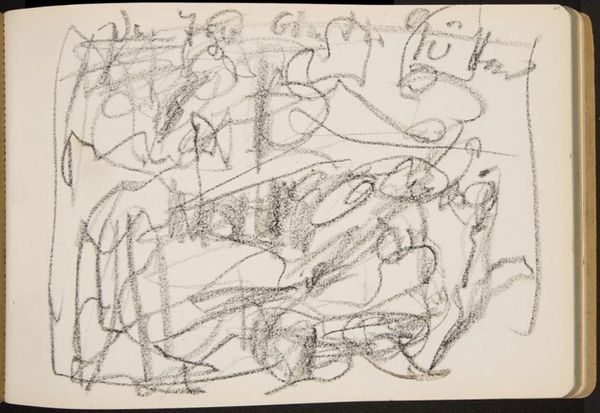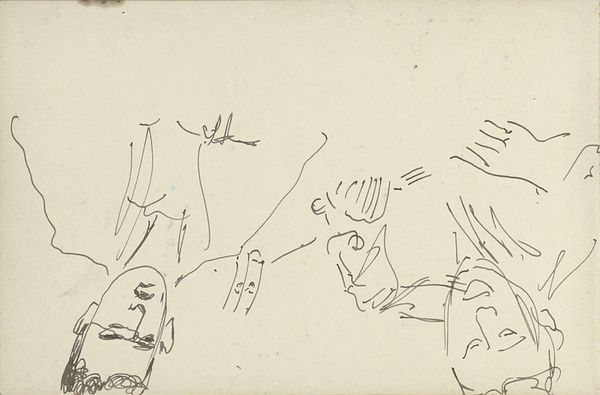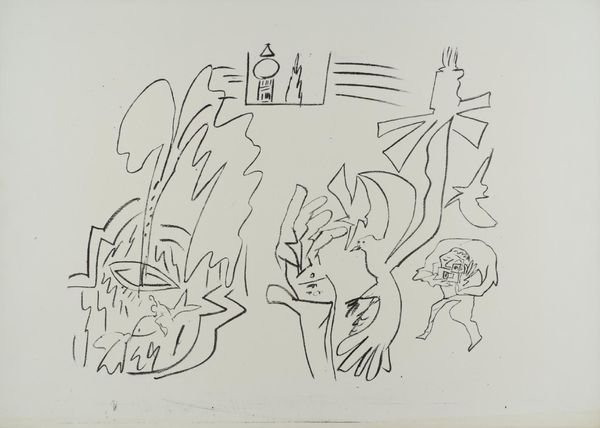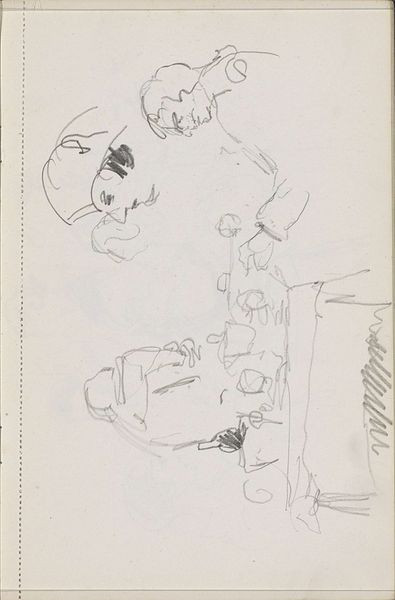
drawing, ink
#
drawing
#
figuration
#
ink
#
line
#
genre-painting
Copyright: Constantin Piliuta,Fair Use
Curator: Here we have Constantin Piliuta's ink drawing, "Piliuță and the 48ists", created in 1973. It is, as you can see, a work on paper rendered with rapid, almost frenetic linework. What impressions does it give you? Editor: Chaotic, and tinged with both celebration and melancholy. The sparse use of line conveys a rawness. Almost feels like glimpsing a dream, or perhaps a fragmented memory surfacing. Curator: I think your perception speaks to Piliuta’s complex relationship with the Romanian art scene during the communist era. He was part of a generation deeply influenced by socialist realism, but his work often subverted those ideals through satire and symbolism. This piece, in particular, engages with the idea of cultural gatherings. Editor: Yes, but they aren’t simply ‘gathering’; observe the table, brimming with implied camaraderie, music, shared drinks. The artist strategically included recognizable symbols, perhaps rooted in rural Romanian culture, blending folklore into a scene from daily life. Then, on the top left, a symbolic crucifixion appears in the corner of the drawing, with only one of the seated peasants turning his face towards him. I can't help wondering what this detail wants us to understand. Curator: Precisely, he frequently incorporated such elements into his work as commentary on political power and the manipulation of traditions for propaganda. Editor: Absolutely, the layering is profound. What initially reads as a spontaneous sketch is in reality, a layered construction of visual signifiers, echoing themes of repression and perhaps a yearning for a sense of spiritual redemption through memory and social interaction. Curator: Indeed, art, in Piliuta's Romania, acted as a subtle weapon of opposition. I believe, on reflection, that the artist gives us both an intimate glimpse into those contradictions and a broader observation of art’s capacity to quietly subvert ideological control through powerful social commentary. Editor: What I take away most, in the end, is that beneath this light, energetic style rests a poignant commentary about remembrance, spiritual freedom, and humanity tested under pressure.
Comments
No comments
Be the first to comment and join the conversation on the ultimate creative platform.
